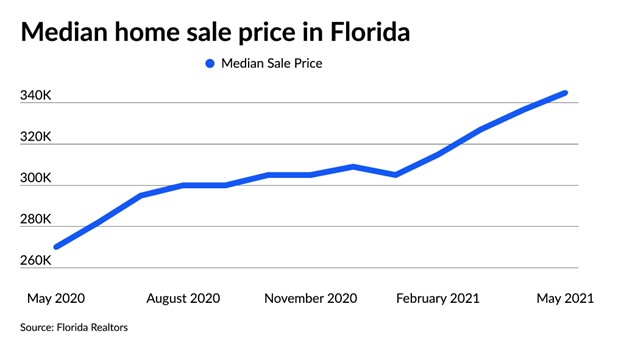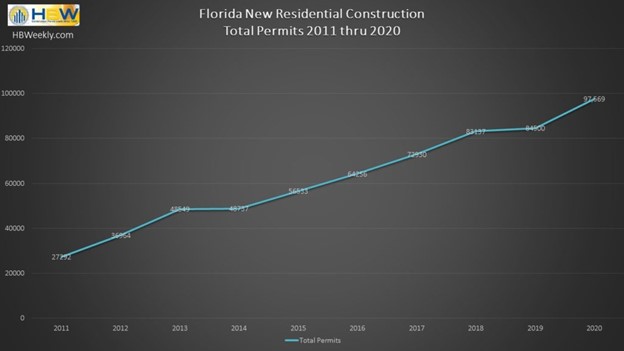Florida is one of the hottest real estate markets, and it begs the question is there a housing shortage or oversupply in the state?
There is always a seller for each buyer, and while a rising real estate market may indicate supply constraints, that is not always the case. In this analysis, we will look at the raw data and interpret and understand whether there is a housing shortage or oversupply in Florida and what exactly is driving prices higher.
Understanding the real estate market in Florida
Median home prices have surged in Florida during the last two years, partly due to Covid-19, with many individuals going fully remote and choosing to relocate. While some companies have also moved to Florida due to the attractive business policies put in place by Governor DeSantis.

This has created an influx of remote workers looking for better weather and a lower cost of living. This also partly explains the population increase across the state. It explains the increase in rent prices across the state compared nationwide and the lower number of houses available to rent.
Despite the rise in home prices, home prices in Florida are still slightly lagging compared nationwide. On top of this, housing inventory, as the number of active listings is now roughly 50% lower than before the pandemic.
One of the reasons that explain the lower number of active listings is that single-family home transactions have continued to increase throughout 2020 and 2021.
Demand and supply dynamics in Florida
While analyzing the number of active listings is a good way to understand housing supply, it falls short when trying to see the grand picture. The reason is that active listings show homeowners or investors’ intent to sell a property, but it does not paint the full picture to understand the market’s supply side.
For that, we will need to look at the number of houses per inhabitant and compare it with the national average. At the same time, Florida remains one of the top destinations in the country to buy a second home, affecting how we analyze the results since these individuals are not actively looking to sell their property. They might rent it out but are not usually interested in selling it.
There are 10,054,457 residential properties in Florida, which considering the population of roughly 21 million, makes up 0.47 for each inhabitant. This means that, on average, there is roughly a house for 2 Floridians.
Nationwide, it is estimated that there are 142,153,010 residential properties in the US. This equates to 0.43. While it may seem like Florida has more houses available per inhabitant than the rest of the country, it is essential to understand that Florida has 1.04 million second homes, and it is by far the favorite destination to buy a second home.
This means that ~10% of all the houses in Florida are second homes, which pushes the real house per inhabitant figures to 0.429, slightly lower than the national average.
While our initial estimate is based on the Census and the second home data, other studies estimate that 1.7 million homes in Florida are empty. If these estimates are correct, we could estimate that between 15% and 20% of all the residential properties in Florida are not available for renters or buyers.
If these estimates are correct, it explains how the number of listed properties for sale is so low and how the market might continue to rise despite the rising mortgage rates and the declining prices in some areas of the country.
This apparent shortage created by the second home demand, the empty houses, and the short rental market has also increased the number of building permits, which slightly increases the supply but does not have a meaningful effect.

Source: HBWeekly
Conclusion
While several experts are predicting the real estate market to cool off, will it have the same effect in Florida as in the rest of the country?
While there is an increase in active listings from the bottom in 2021, there are still individuals looking to relocate to Florida, and the population is expected to grow. The property rental market should remain stable due to the strong demand and continued shortage of homes.
The main risk for the current market is a possible recession that would push empty residential properties onto the market and could lower the average and median home sale prices, but at the same time, it might not have the same impact on home prices as it will have on rents. The reason is that these houses may come into the market as long-term rentals.
